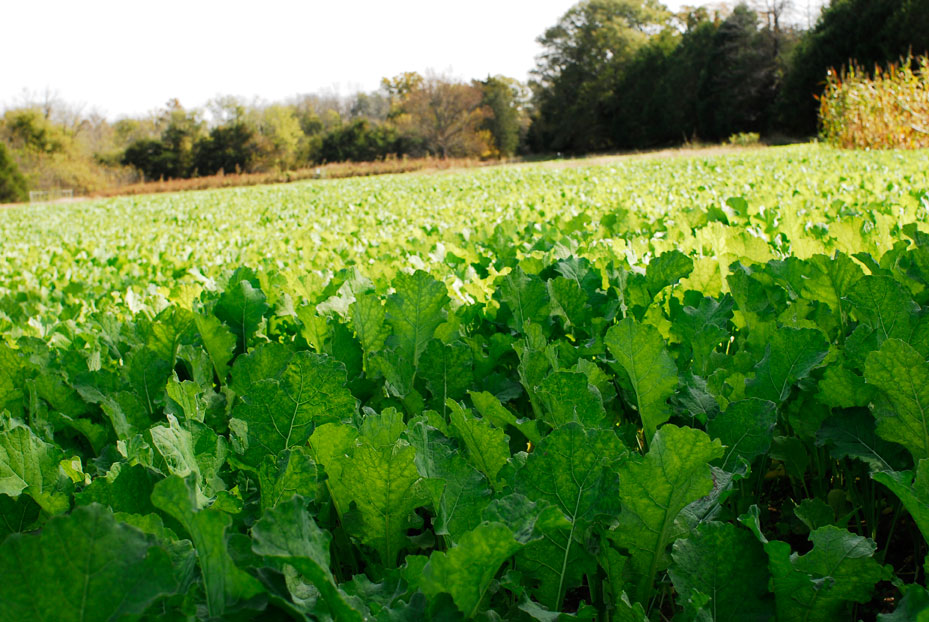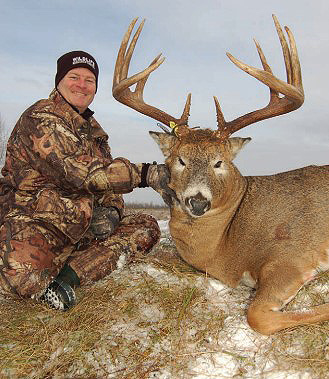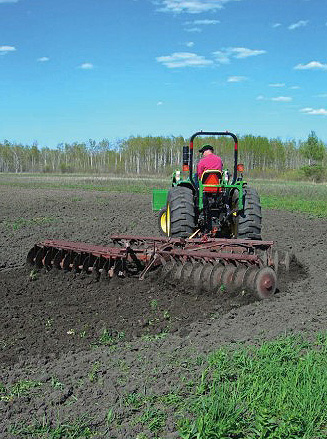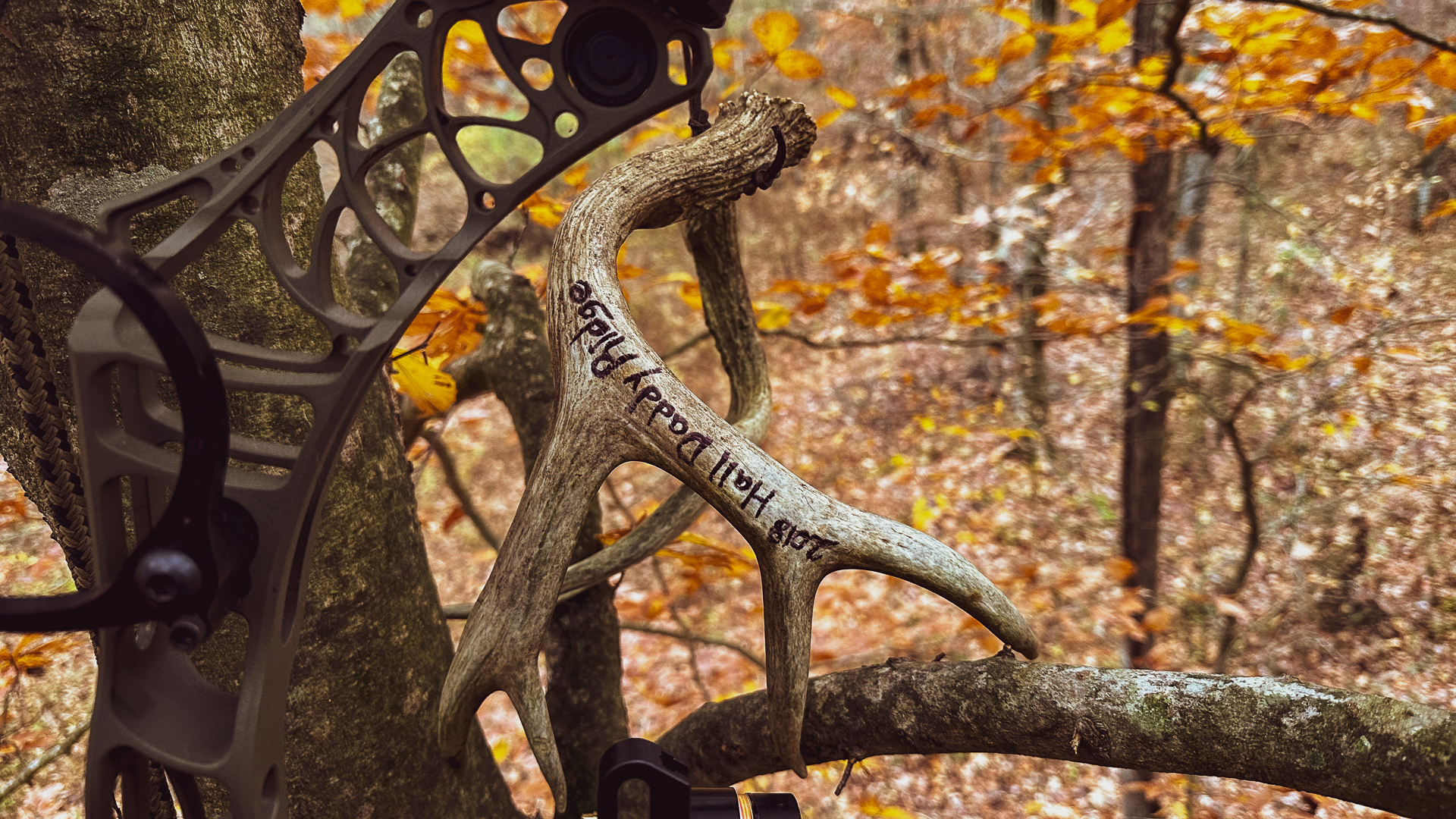Todd Amenrud | Originally published in GameKeepers: Farming for Wildlife Magazine. To subscribe, click here.
Many first-time food plot farmers try the “food plot thing” with limited success. The surprising this is—many are going to plant the same thing, the same way, with the same results again this year, and as you may know—that’s the definition of “insanity.” While adapting on the fly and changing your strategy when new information becomes available is an important trait if you wish to be a good land manager, with most elements of managing a property “beginning with a plan” is the best option, especially with planting food plots. The readers of this publication are, for the most part, at a level above the average food plot farmer, yet I still see many that would benefit from a well laid-out plan.

Think about your objectives—what is your budget, assess your site, do you have a timeline and access to equipment? Line these elements up before you begin.

off the competition in your plot with an herbicide
like glyphosate. You want to make sure that your
food plot plants receive the total benefit of the
sunlight, moisture and nutrition and do not have
to compete with grass or weeds.
Evaluate your property so you understand “where you are now.” Trail cameras are invaluable for learning the status of your herd. “Where you want to be” will be defined through your goals for the property. It’s your job to develop a “roadmap” to get you from where you are now to where you want to be. Do you want to attract deer? Do you want to grow bigger antlers and healthier deer, or, maybe you wish to implement an all-around approach? In some areas recouping from rut trauma or wintertime, stress may be most important. Think about these things first because your plan will vary for each goal.
Budget and timeline kind of go hand in hand. Everybody wants to grab a bag of seed, get it in the ground, watch it grow and wait for big bucks to stampede to the plot. Obviously, it doesn’t work that way. Managing whitetails and being a land steward are ongoing endeavors. You do what you can now, and you add to it as you go. Within a couple of years, you’ll have something that you can be proud of and will provide you with awesome hunting for years to come. Make sure to budget for the near term and long term plans.
Map out your plans. Using satellite images, aerial photos and topographical maps, plan out your plot locations and designs. Note the size and shapes to all your plots. There are programs available in the agricultural industry that can help such as “Farm Works” or “Smart Draw,” but I usually do it the old fashioned way with a laser range finder and a map. You will need to determine what to plant. After thirty years of planting just about everything you can think of for whitetails, I've learned to start with the basics and fine tune and adjust after they’re in place. Variety is important in an all-around food plot program; I want to have food available to cover their needs regardless of the time or the conditions, but I want the essentials in place first. The fundamentals will vary by region and individual goals, but annual legumes (soybeans, iron & clay peas, lablab), perennial legumes (clovers, alfalfa, chicory), cereal grains (oats, wheat, triticale), brassicas (radishes, rape, turnips), and if ample acreage is available, corn are often included in a beginning “recipe.” After these crops are working for you, then others can be added.
With many plant types, a “blend” is a much better choice than a “mono-plot.” Unless you're a cash-crop farmer that has the knowledge, pesticides, herbicides, and equipment to care for that one specific crop, you're setting yourself up for a disappointment. With a blend, you’re hedging your bet and protecting yourself against failure.
Because of a whitetail’s needs changing so often during the season, I never put “all my eggs into one basket.” I don’t have any hard-fast policies, but I tend to classify my plots into two basic categories, "feeding plots" and "hunting plots.” My feeding plots are normally larger than the hunting plots and generally situated a bit further away from the bedding areas. While I do make exceptions to the rule, for the most part, I don’t hunt these plots. My goal is to provide as much nutrition to as many deer as possible, and I want them to feel comfortable about accessing this nutrition whenever they want.

their property, put it in the ground and reap the
rewards. Managing whitetails and being a land
steward doesn’t work that way, it is an ongoing
process - you do what you can now and you add
to it as you go. Here, the author’s brother-in-law,
Mike Berggren poses with a “home-grown” buck.
In my “hunting plots,” my goal is to draw them in, so I can kill them, or to use it as a magnet so that I can intercept them on the way to the plot. With these plots, I try and “leave the table set” for them all through the season. With limited choices, you are restricting the palatability timeframe for your plot. I may divide a specific hunting plot up into as many as 4 to 6 sections depending upon how large the plot is. A good basic strategy is to plant Clover Plus in one of the spots, one of BioLogic’s blends that contain brassica cultivars in one (Deer Radish, Maximum, Winter Bulbs & Sugar Beets), in one I’ll plant Trophy Oats, Outfitter’s Blend or something with a high ratio of cereal grains, and if there’s enough acreage, I may also plant a strip of corn. By planting this variety, I’ve given them something that is going to keep them coming to the spot from before the opening of bow season too long into the winter or until the food runs out.
One thing to note is that you must have adequate acreage to do this tactic justice. For instance, if you have only an acre or less, you are probably better off limiting your number of plantings and targeting your approach. Otherwise, there’s not going to be enough of any one cultivar to keep them coming back—they’ll wipe you out too soon. With small plots, you have to be specific and plan the peak of attraction to be when you wish to use the site for attraction.
When planting anything for whitetails, proper preparation is key to beautiful, lush plots. A soil analysis should be one of your first steps. A very easy, inexpensive way to do this is to visit BioLogic’s website, select the “BioLogic Soil Test” tab and follow the simple instructions there.
Pending the results of your soil test, you’ll likely need some lime in addition to your N.P.K. fertilizer. Talk to your local farm supply outlet and line this up in advance. Large cash-crop farms will receive priority during planting time, so check with your dealer first, especially if you need your lime or fertilizer delivered.

ground to prepare your seedbed. Disking or
tilling the soil will both work well and you can
use equipment all the way from ATV implements
on up to large tractors.
If you need to raise the pH, lime to the result’s recommendations. Remember that lime, as opposed to the ingredients in your typical fertilizer (N-nitrogen, Pphosphorus, K- potassium and sometimes S-sulfur) which moisture will slowly help to move through the soil for you, needs to be put where you want it to do its job—so it should be worked into the soil where the plant’s roots will be. If you have acidic soil, or a low pH, the plants will not be able to pull the soil nutrients, or your fertilizer, through their root systems. So creating soil with a neutral pH is very important.
Another important step is eliminating the competition for sunlight, moisture and food. Wait until your weeds are growing vigorously and kill them all with glyphosate (Round-Up) or your favorite post-emergent herbicide. Primetime in the springtime is usually when the daytime highs are in the 70’s or after a rain once temperatures warm up. You want the target plants to be growing vigorously so that they suck the poison all the way into their root system. Instead of letting your soil lay dormant, it is highly suggested to use a cover-crop such as Deer Radish to help keep weeds at bay, improve soil aeration and increase nutrient levels.
Wait a week after applying your herbicide and then work your seedbed by disking or tilling and next, plant your seeds by broadcasting or drilling. Under certain conditions, this may not be the proper order of steps. If you have an active native seed bank or you’re claiming new ground, you may wish to work the soil first, wait for the seed bank to germ and green-up, then kill it with your post-emergent, contact herbicide. Your conditions will dictate how you proceed.

related goals. Ideally, the author wants to have a
palatable food choice available to cover the
herd’s needs regardless of the time or conditions
If you don’t own equipment, everything you need from sprayers to disks can be rented. You may also have a nearby farmer with equipment that could be rented, or bartered for in exchange for some work around the farm. In addition to lining up your equipment ahead of the project, make sure that the equipment you choose can access your plot locations. Can the big tractor with the eight-foot disk make it up the logging road and under the big oak tree without breaking off the mirror? Prior planning can make or break an outing or an entire season.
At some point along the way, you'll want to feed your plants. You can add fertilizer when you work the soil, when you plant, or a couple of weeks after the plants germinate, but at some point, you want to give them some food. I strongly suggest fertilizing according to what your soil test results tell you. If you have the time, a portion of the fertilizer can be worked into the soil 2 to 4 inches a couple of weeks ahead of planting. Then once the seeds are planted, the remaining fertilizer can be applied over the top. This way regardless of the moisture levels, some of the fertilizer’s nutrients should be available for the new plant’s roots immediately once they reach that level.
Food plots are going to decrease the home range size of each animal on your property and in turn, increase your property’s carrying capacity. However, if you want to notice a significant increase in the amount and size of the animals on your property, you should combine habitat manipulation, woods work and selective harvest along with planting food plots. If you provide more food, but don’t give them more “housing,” then your impact probably won’t be what you expect. On the same note, if you harvest every young buck that you see – don’t expect to see any trophy bucks.
As mentioned, food plots are only one portion of the management puzzle, but you will find that all facets of whitetail management will turn out best if you plan accordingly. Proper planning will prevent time loss, save you money and help you to realize your management goals.
































